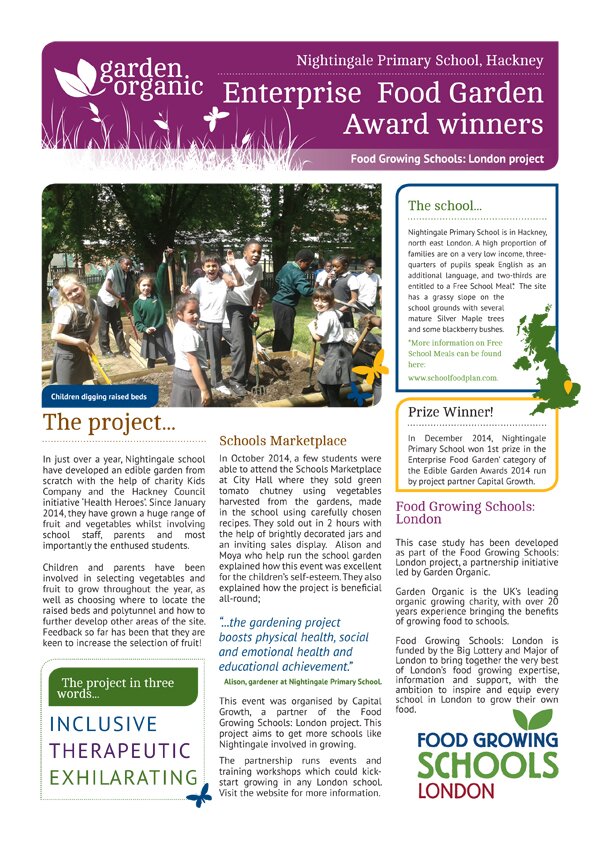If you’ve been following our recent blogs you may have plans for food growing, whether that is allocating some space for food growing, gathering resources, or planning food growing into the curriculum.
Wherever you are on your food-growing journey is very exciting, but the maximum benefits come from instigating a whole school approach to food education.
Essentially this is where understanding about all aspects of food (including growing and healthy eating) has senior management support, is throughout the curriculum and in the school development plan. It is for all pupils and at all times of the day and even influences the wider community.
It may not be easy but it is definitely worth aiming for and we have some school stories to inspire you!
Rhyl Primary School has won numerous awards for the outdoor learning activities but started with just two small raised beds. All pupils have regular weekly sessions in the garden and outdoor classroom and the school has plans to build a teaching kitchen giving access to community organisations and families, as well as to be used during the school day.
At John Ruskin Primary adopting a whole school approach has increased take up of school dinners and understanding of where food comes from. Pupils have developed their social and team skills as well as the more practical gardening skills.
Tim Baker, Headteacher at Charlton Manor Primary is so convinced of the wider benefits of food growing that he is helping other local schools and community projects to grow, sharing allotment space and time with the school’s gardener and the school hosts a parent and child growing club.
Recipe for Success:
- Getting support from teachers and building their knowledge is key to getting food growing embedded into the school’s ethos. There are lots of training events and workshops whether you’re a complete beginner or wanting to take your growing activities to the next level
- The Soil Association Food for Life Schools Award is designed to support schools to develop a healthy food culture
- The RHS School Gardening Awards help schools to work through five different levels, turning their garden into a valuable learning resource for the whole school and the local community







